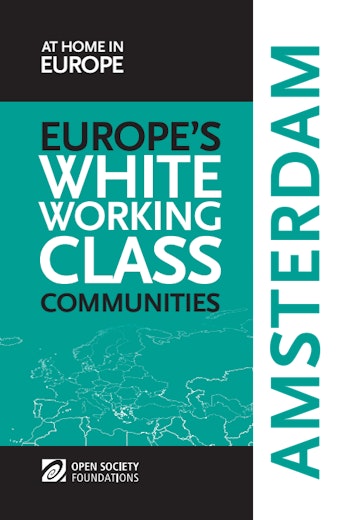Voices from the White Working Class Community in Amsterdam
By Saskia Welschen
Dotted with small houses and vividly decorated gardens, Tuindorp Buiksloot and Floradorp are urban neighborhoods with a village feel. The same families have lived for generations in these two sections of Amsterdam-North, and everyone knows their neighbors’ name.
What also characterizes these neighborhoods is their remarkably homogenous population. In contrast to most of the city of Amsterdam, the overwhelming majority of residents here are still of Dutch heritage. Additionally, the population is homogenous in socioeconomic terms, and may be classified as “working class.” These communities have acquired a particular reputation as rebellious and anti-establishment. They are also associated with large numbers of school dropouts and high voting patterns for populist political parties like the Freedom Party of Geert Wilders.
Their true character, however, is endlessly more complex and multifaceted than these simplistic images would suggest. As part of our research project on white working class communities, we organized group conversations with a large number of residents in both neighborhoods. We explored their concerns in a range of social domains—from health care, employment, and education to housing and political participation.
One of the most striking findings was the remarkably strong sense of community and belonging. The residents of Tuindorp Buiksloot and Floradorp feel strongly rooted in their neighborhoods and have no desire to move anywhere else. This sense of community and kinship makes people feel safe and at home. “As soon as I cross the bridge,” one young man explained, “I feel safe. This is our place, our neighborhood.” At the same time, these communities are not isolated from the rest of society, and are experiencing important changes at different levels.
The face of both neighborhoods is slowly but surely changing, with a steady increase in people from different backgrounds, both in terms of class and ethnicity. Some of the “original” residents feel threatened by these changes, and integration between old and new residents has not been without tensions.
Another big change is happening at the level of government support. People experience the closure of traditional welfare facilities as a real loss, and believe that their community is unfairly treated: “Other neighborhoods get everything, while we are left with nothing,” one man complained.
What people see is a government that is providing less, leaving residents to organize their own community and youth facilities, care for the chronically ill and elderly, and keep public space clean. The transition from a classical welfare state to a “participation society” is breeding unrest. People often link this directly to an increase in crime and in youth causing trouble on the streets.
There are changes at the economic level as well. Historically, these neighborhoods have been home to workers employed in the shipyards of the Amsterdam harbor, and a tradition of manually skilled work is transferred from one generation to the next. Young people attain low levels of education, and are inclined to start working at an early age.
But industrial harbor work has long disappeared from Amsterdam-North, and manually skilled work these days often comes in the form of unstable self-employment in a competitive environment. The recent economic recession, in combination with austerity measures, has hit these communities particularly hard. People struggle to make ends meet, see their debts increase, and become increasingly vulnerable to poverty.
Uncertainty about the costs of health care, for example, deter people from seeking medical aid when needed. “I think twice when I go to the doctor,” one woman told us. “I am really afraid of the invoice. You don’t have a clue what you need to pay for and how much.”
Although these changes create anxiety, we identified many ways in which unrest can be countered and social change can be transformed into something positive. Residents of Tuindorp Buiksloot and Floradorp are genuinely very committed to their communities and their neighbors. Under the right conditions, a great source of potential for self-organization can be unleashed here.
In 2012, a classical opera was staged in Floradorp, which featured local residents as leading stars. It was an empowering experience for many, and it contributed social cohesion between old and new Floradorp inhabitants. Another positive example is the community center in Tuindorp Buiksloot called the Driehoek, which was on the government’s list for closure but is now successfully run by a group of energetic locals. The center is attracting larger audiences and stimulating participation of more residents than the old state-sponsored facility did.
Moving forward, the local government must develop a flexible, open, and tailor-made policy approach to manage the impact of the large transformations on communities if their vitality, resilience, and engagement is to be ensured.
Saskia Welschen is an independent researcher and lecturer in sociology, and author of the report White Working Class Communities in Amsterdam.
